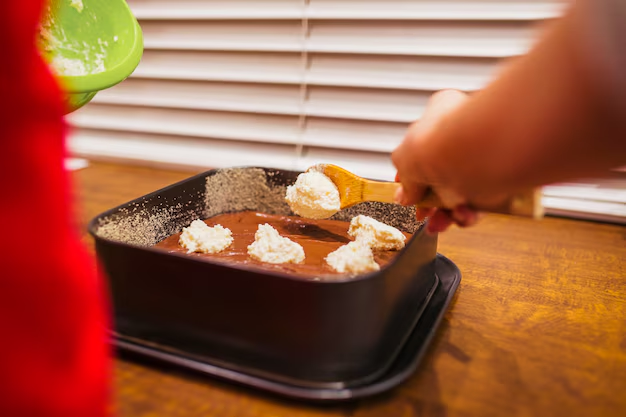Can You Put Hot Food in the Refrigerator? A Comprehensive Guide
Have you ever finished cooking a meal, only to wonder whether it's safe to put the hot leftovers directly into the refrigerator? This common kitchen conundrum often leaves people guessing what will happen if hot food meets the cool confines of a fridge. You might be concerned about food safety, refrigerator efficiency, or even the impact on your energy bill. This article aims to clear the air, providing a comprehensive look at what truly happens when hot food is stored in the refrigerator and offering practical guidance on best practices.
The Effect on Food Safety: Cooling Down Hot Food
Preventing Bacterial Growth
When it comes to food safety, one of the primary concerns is the risk of bacterial growth. Leaving food out at room temperature for an extended period can allow harmful bacteria to multiply. The USDA recommends not leaving perishable food out for more than two hours. So, as long as food doesn't cool below 140°F (60°C) sitting out, it could become a temperature danger zone for bacteria like Salmonella or E. coli.
Refrigeration and Safe Cooling
Refrigerators are designed to keep temperatures typically between 35°F to 38°F (1.6°C to 3.3°C), inhibiting bacterial growth. However, when hot food is placed directly into the fridge, the internal temperature of the food might not drop quickly enough, potentially allowing harmful bacteria to thrive. Experts generally advise cooling hot food slightly before putting it into a refrigerator to ensure it falls into the safe temperature zone as rapidly as possible.
Impact on Refrigerator Efficiency
Strain on the Fridge
Putting hot food directly into the refrigerator can momentarily raise the temperature inside, causing the appliance to work harder to restore a cool environment. This can lead to increased energy consumption and possibly reduce the appliance's lifespan over time, though modern fridges are quite resilient.
Food Safety vs. Energy Efficiency
While energy efficiency is a valid concern, it should not override food safety. The goal should be to balance the cooling process: allow hot food to cool on the counter briefly to bring down the temperature, but not exceed that two-hour guideline. Using shallow containers can help speed up the cooling process, as they expose more surface area to the air.
Maintaining Food Quality: Texture and Flavor Considerations
Impact on Texture
Refrigerating hot food can sometimes impact texture and flavor. For example, heated starches like rice or pasta can become mushier when cooled too slowly. Rapid cooling can help maintain ideal texture.
Flavor Preservation
Sudden temperature changes can affect flavor. Warm food in a sealed container can lock in steam, which might alter taste. Allowing food to cool slightly before sealing and refrigerating could enhance flavor preservation.
Practical Tips for Safe and Efficient Refrigeration
Steps to Follow:
To maintain a balance between food safety and fridge efficiency, consider these expert recommendations:
- Cool it Outside First: Allow food to cool briefly before storing in the fridge, but not for more than two hours.
- Use Shallow Containers: These aid in cooling food faster.
- Leave Space: Arrange food so that air can circulate around the containers, aiding in more even cooling.
- Avoid Overpacking: So your fridge can circulate air effectively.
- Seal Smartly: Use airtight containers to prevent moisture loss and flavor transfer.
Common Myths Debunked
Myth:You must cool food entirely before refrigerating.
Reality: Let it cool slightly, but avoid excessive delays to prevent bacterial growth.
Myth:Putting hot food in the fridge ruins the appliance.
Reality: While it may temporarily strain efficiency, modern appliances are well-positioned to handle occasional cooling spikes without long-term damage.
Example Scenarios: Everyday Situations to Consider
Weeknight Dinner Prep
After a family dinner, you're left with hot leftovers. Instead of worrying over waiting indefinitely, let dishes cool while you clean up — then refrigerate those hot dishes right away.
Batch Cooking
You've cooked a large pot of soup. Divide it into several shallow containers rather than cooling the entire pot to hasten reheating and chilling.
Table Summary: Quick Tips for Refrigerating Hot Food
| 🚀 Tip | 🌡️ Action |
|---|---|
| ❄️ Cool Rapidly | Use shallow containers for quicker cooling. |
| ⏲️ Time Wisely | Stick to the two-hour rule for food safety. |
| 📦 Pack Efficiently | Leave space between items in the fridge. |
| 🥶 Don't Overpack | Ensure proper air circulation inside the refrigerator. |
| 👍 Seal Appropriately | Use airtight containers to conserve flavor and moisture. |
Final Insights on Refrigerating Hot Food
Balancing food safety, energy efficiency, and food quality may seem complex, but with a little understanding, the process becomes intuitive. Prioritize food safety first, considering factors like optimal cooling times and container choices. With these pointers, you'll navigate the dinner-to-fridge transition confidently and safely each time. This comprehensive guide should empower you to make informed decisions in the kitchen, ensuring your food stays fresh and your fridge runs efficiently.
